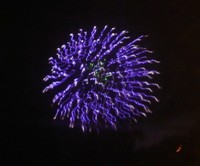Australia So Much to See


The Gary Junction Road Alice Springs, Northern Territory section
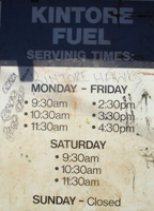
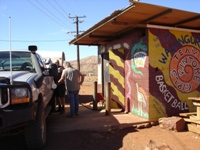
Even then, the attendant said they are sometimes closed on a Tuesday - or on any other day they chose. You cannot guarantee
you will get fuel here every day of the week.
The orange sandy road was much wider as we continued into the
The Sandy Blight Junction turn-off was a further seventeen kilometres east of the Kintore turn-off. This is another of
the Len Beadell Roads, which zig-zags back into

From the orange road, distant hills, rugged in the sunlight to the south, and shades of blue and mauve looking towards the sun in
the north. Mount Liebig came into view and is particularly striking. Len Beadell lined up the road to take advantage of
the view and described “The whole section of that country was amongst the most picturesque in
Heading further east the next day, we passed Mount Liebig and other ranges in varying colours, shapes and textures. Len certainly captured the beauty of the area in his phrase.
As we passed the community at Papunya, Mount Zeil came into view. Although 55 kilometres away, this highest point of the West MacDonnell Ranges stood out from the surrounding hills.
The
brick coloured Haast Bluff dominated as we approached and turned south onto
Stopping to check another Len Beadell plaque, we drove in a little way from the road to find a very good place to camp. Lizard
Bore has been decommissioned and the solar panels from the pump have been removed. There was neither hand pump nor any other
way of drawing water from the bore, which was a pity as I found our general water tanks were empty.
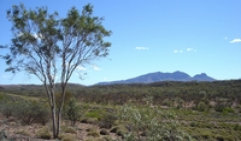
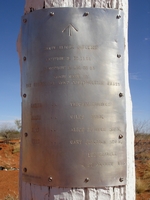
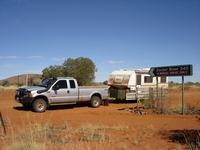
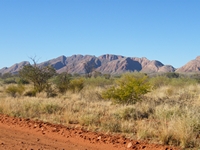
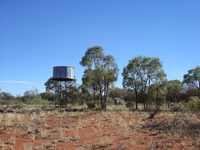
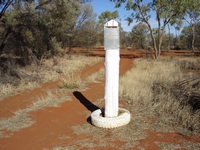
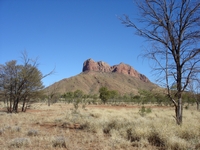
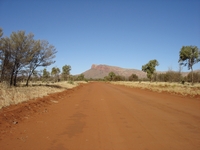
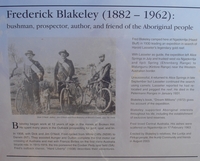


Bushman, prospector, author, and friend of the Aboriginal people.
Blakeley
began work at 12 years of age in the mines at Broken Hill. He spent many years in the Outback prospecting for gold, opal, and tin.
In
1908, with Dick and Jim O’Neill, Fred cycled from White Cliffs (NSW) to Darwin (NT). They assisted Aunger and Dutton complete
the first motor car crossing of
Fred
Blakeley camped here at Ngankirritja (Haasts Bluff) in 1930 leading an expedition in search of Harold Lasseter’s legendary gold reef.
With
Lasseter as guide, the expedition left Alice Springs in July and trucked west via Ngankirritja and Ilpili Spring (
Unsuccessful, it returned to
Blakeley’s book, “Dream Millions” (1972) gives his account of the expedition.
Blakeley
supported Aboriginal interests throughout his life, including the establishment of exclusive reserves.
Fred loved
Erected by Blakeley’s relatives, the Luritja and Pintubi people,
the Ikuntji Community and friends in August 2003.
Harold Lasseter’s son, Bob Lasseter, blames Frederick Blakely for
his Father’s death. See ABC interview
Read more about Frederick Blakeley from Lasseteria website here
Discovering our chosen caravan park out of town was fully booked, we had to stay in a town caravan park. The annual Alice Springs Show
was on that coming weekend, with Friday being a public holiday. In the
Sunday nights at the Heavitree Gap Outback Tavern is all you can eat roast night and entertainment attended by many of the guests from the three adjacent caravan parks. With a selection of roast beef, camel, pork and chicken plus an array of vegetables and salads followed by entertainment with a country style singer and reptile handler who delivered his display with humour and good common sense about snakes. We paid $10 per head (now $12.90). Drinks and deserts not included in this price. With $12.90 specials available every week night there are plenty of reasons for the cook having a few nights off.
